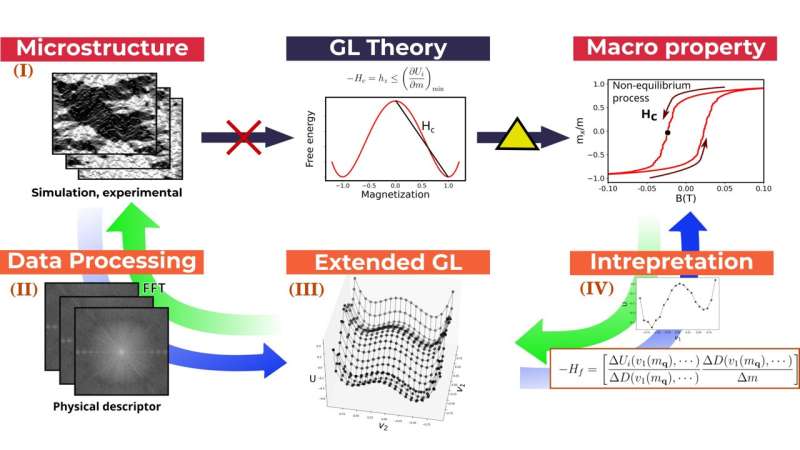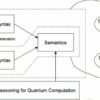Soft magnetic materials, i.e., materials that can be easily magnetized and demagnetized, play an essential role in transformers, generators, and motors. The ability of a magnetic material to resist an external magnetic field without changing its magnetization is known as “coercivity,” a property closely linked to the energy loss. In applications such as electric cars, low-coercivity materials are highly desirable to achieve higher energy efficiency.
However, coercivity and other magnetic phenomena associated with energy losses in soft magnetic materials originate from very complex interactions. The usual macroscale analysis suffer from oversimplification of the material’s structure and they often need additional parameters to adjust the theory to the experiment. Thus far, although the tools and frameworks to analyze coercivity are widely available, they mostly do not consider directly the defects and boundaries in the material, which is fundamental to develop new applications.
Against this backdrop, a research team including Prof. Masato Kotsugi from Tokyo University of Science (TUS), Japan, recently developed a new approach to connect the microscale characteristics to a macroscopic physical property, coercivity, using a combination of data science, machine learning, and an extension of the GL model. This study, led by Dr. Alexandre Lira Foggiatto from TUS, was published in Communications Physics.
The team aimed to find a way to automate the coercivity analysis of magnetic materials while accounting for their microstructural characteristics. To this end, they first gathered data for both simulated and real magnetic materials in the form of microscopic images of their magnetic domains.
The images, after preprocessing, were used as input for a machine learning technique called principal component analysis (PCA), which is commonly used to analyze large datasets. Through PCA, the team condensed the most relevant information (features) in these preprocessed images into a two-dimensional “feature space.”
This approach, combined with others machine learning techniques, such as artificial neural networks, allowed the researchers to visualize a realistic energy landscape of magnetization reversal in the material within the feature space. A careful comparison of the results for experimental and simulated images demonstrated the proposed methodology to be a convenient strategy for mapping the most important features of the material in a meaningful way.
“Describing the energy landscape using machine learning showed good results for both experimental and simulated data. Both shared similar shapes as well as similar explanatory variables and correlations between them,” remarks Dr. Foggiatto.

A new approach developed by TUS scientists allows researchers to effortlessly analyze the effect of microstructures on a material’s coercivity, a magnetic property that is relevant to the development of soft magnetic materials for efficient electric motors and other devices. By extending the conventional Ginzburg–Landau theory and leveraging data science techniques, the method makes it easier to link microstructural characteristics to macroscopic material properties. © Masato Kotsugi from Tokyo University of Science, Japan
Overall, this study showcases how materials informatics can be cleverly leveraged to not only automate but also clarify the physical origin of coercivity in soft magnetic materials. With any luck, it will help materials scientists and physicists derive new physical laws and models to go beyond the state-of-the-art models and frameworks.
Moreover, the applications of this strategy go well beyond coercivity, as Dr. Foggiatto highlights, “Our method can be extended to other systems for analyzing properties such as temperature and strain/stress, as well as the dynamics of high-speed magnetization reversal processes.”
Interestingly, this is the second study Prof. Masato Kotsugi and his colleagues have published in relation to the extended Landau free-energy model they are developing. They hope that, in the near future, their functional analysis models will help achieve high efficiency in electric car motors, paving the way to more sustainable transportation.
More information:
Alexandre Lira Foggiatto et al, Feature extended energy landscape model for interpreting coercivity mechanism, Communications Physics (2022). DOI: 10.1038/s42005-022-01054-3
Provided by
Tokyo University of Science
Citation:
Making sense of coercivity in magnetic materials with machine learning (2022, December 1)



